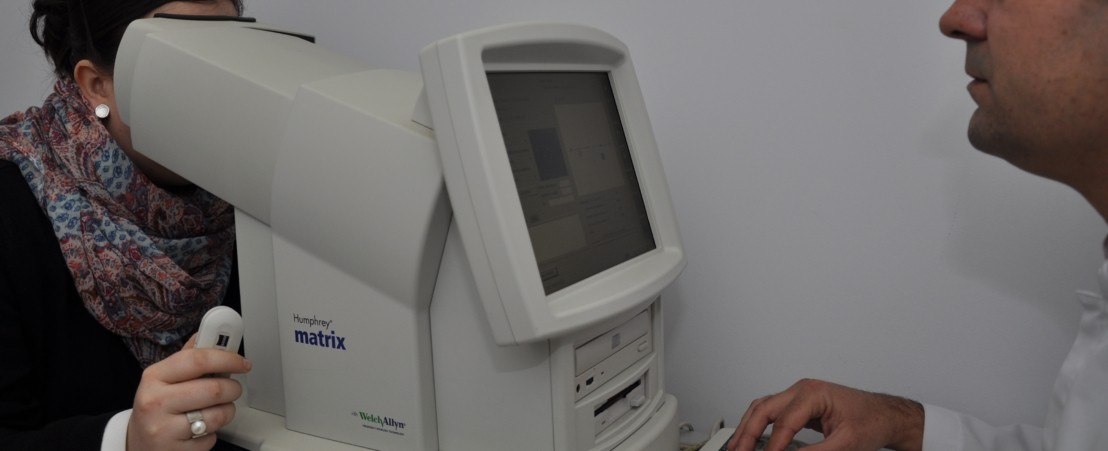
This is a campimetry that uses FDT dual-frequency technology to detect glaucomatous losses (visual field alterations) with great sensitivity. Due to the exam’s quickness, this technology is very useful for the study of the visual field in cases of difficulty of collaboration due to advanced age or other reasons.
This test is performed for the detection, diagnosis and follow-up of:
It does not require any particular preparation or pupil dilation. In addition, it is a test that can be performed with contact lenses or glasses.
Campimetry – FDT – Matrix is a non-invasive technique, so it does not require direct contact with the eye and does not produce adverse reactions. After the test, therefore, any day-to-day activity can be performed without any problem.
It is usually performed monocularly, first one eye and then the other. However, sometimes the test can be performed binocularly (with both eyes at the same time).
The test is performed in a seated position and does not require contact with the ocular surface. With the patient’s chin resting and the forehead well positioned forward, the patient should gaze at a central red/orange reference light pattern located inside the device, in the center of the screen. Each time a luminous stimulus (black and white bands) is seen, the patient should press the button on the remote control to indicate that the stimulus has been detected. Throughout the test, the patient can blink, but should not deviate the eye from the fixation point.
The test lasts approximately 20 minutes and is performed by an optometrist. Once the results have been collected, the ophthalmologist will be in charge of analyzing the results and transmitting them during the next visit.

No, since it is a non-invasive technique that does not contact the eye, it does not cause any type of discomfort.
No, this test does not require you to be accompanied by another person.
No, it is not necessary to fast for the test.
The results are obtained at the same time the test is performed.
No. The optometrist is the one in charge of performing the test and has the knowledge to confirm its correct performance. The one who must interpret and report the results obtained is the ophthalmologist, who will do so taking into account the clinical context after a complete anamnesis and examination of the patient.
Yes, after the test it is possible to carry out any daily activity, such as driving or showering.
Yes, there is no inconvenience in using make-up after this test.
Contact us or request an appointment with our medical team.